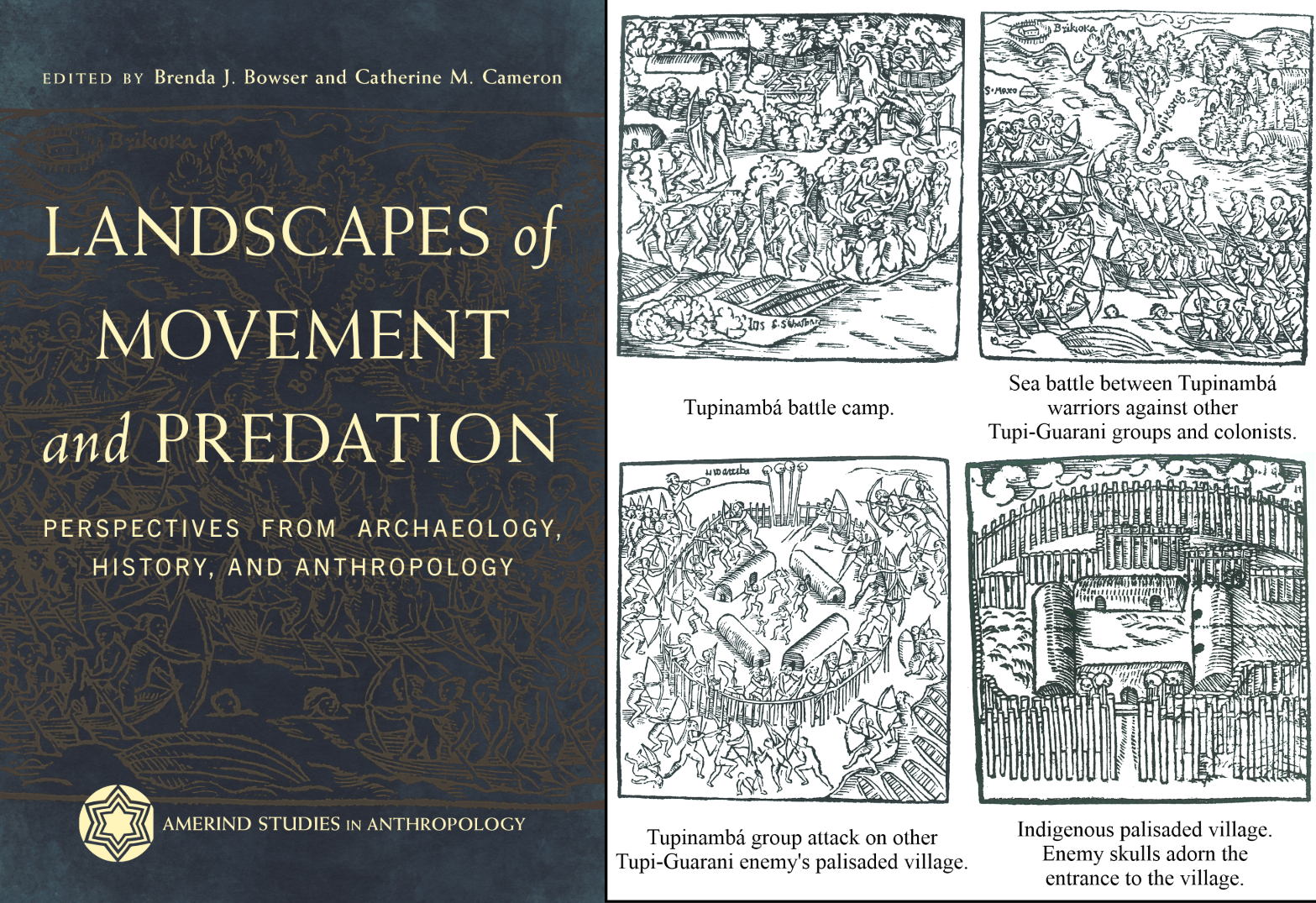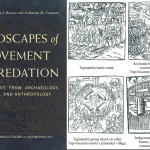October 22, 2024
Landscapes of Movement and Predation: Perspectives from Archaeology, History, and Anthropology edited by Brenda J. Bowser and Catherine M. Cameron, is a global study of times and places where people were subject to brutality, displacement, and loss of life, liberty, livelihood, and possessions. Extensive landscapes of predation emerged in the colonial era when Europeans expanded across much of the world, appropriating land and demanding labor from Indigenous people, resulting in the enslavement of millions of Africans and Indigenous Americans.
Landscapes of predation also developed in precolonial times in places where people were subjected to repeated ruthless attacks and dislocation. With contributions from archaeologists and a historian, the book provides a startling new perspective on an aspect of the past that is often overlooked: the role of violence in shaping where, how, and with whom people lived. Using ethnohistoric, ethnographic, historic, and archaeological data, the authors explore the actions of both predators and their targets and uncover the myriad responses people took to protect themselves. Read an excerpt from the book’s Introduction below.
“Landscape” is a familiar term for archaeologists. Over the past few decades, the concept of a landscape of the past has grown beyond the idea of human adaptation to a natural environment to include the understanding that humans actively shape their physical, natural, and social environments (Whittlesey 2009). Postmodern approaches to landscape that became common in the 1990s ushered in an increased concern with meaning. Archaeologists following the phenomenological approach used their own senses to assign meaning to landscapes (Tilley 1994; Van Dyke 2007). Increasingly, especially in North America, archaeologists today work closely with Indigenous people to understand landscapes in their terms. Writing about the American Southwest, Severin Fowles (2010) notes that the passage of a law in 1990 concerning the return of Indigenous human remains (the Native American Graves Protection and Repatriation Act) forced archaeologists to engage with and learn from the descendants of the Indigenous people they study (see also Lekson 1996, 891). Consulting Indigenous descendants about the spaces their ancestors inhabited and the meanings they gave to natural and cultural features is now common for archaeologists (Bernstein and Ortman 2020; Duwe and Preucel 2019; in this volume see Kater et al.; Marshall and Biginagwa; Seyler and Leventhal; and Silva). Furthermore, Indigenous scholars themselves explore the history and archaeology of their own people (for example, Kuwanwisiwma and Ferguson 2009, Schneider 2021).
People in the past lived in spaces that were, to them, rich in symbolism and full of memories of ancestors and their activities. But we suggest that there are few places in the inhabited world that were not occasionally touched by violence (Keeley 1996, 3–24; Kim and Kissel 2018, 1–2; LeBlanc and Register 2003, 1–22). Our characterization of landscapes of predation is based on the scale of the violence: they are places in which violence became enduring and intense and forced widespread changes to the lives of the people who inhabited them. As noted above, we adopt, for example, Stahl’s (2008) depiction of Africa during the slave trade and Bowser’s (2008) representation of Amazonia during colonialism and call such places “landscapes of predation.”
As a group, the authors in this volume considered how to define landscapes of predation. A working definition frames the chapters that follow:
A landscape of predation is a geographic space primarily marked or characterized by predatory practices and their consequences. Instability and mobility are inherent. Experiences of predation may be inscribed in memory and may be integral to a sense of place and shared identity.
The geographic space in this definition is situational and not conventionally bounded. It is the space within which predation occurs, not necessarily an established territory or physically or environmentally bounded region. A landscape of predation, as considered here, also includes the consequences of predation, both for the predator and their target. Mobility as the result of predatory behavior is apparent in all of the cases considered in this book and is a fundamental aspect of a predatory landscape. Such mobility may seem chaotic and tumultuous as targeted people flee their predators, but a closer look can reveal strategies for resisting predation; in other words, intentional mobility to avoid or engage with predators (see the Resistance and Other Responses to Predation section below). Of course, predators also move in order to encounter their targets or to pursue actions of benefit to themselves.
“Landscape of predation” is a term that we fear might be misappropriated and used in a multitude of inappropriate situations from Roman wars of conquest to places of contemporary urban poverty. Therefore, we want to be clear about the sorts of times and places we include in the term and those we do not. Landscapes of predation are places of violence, but they are not a battlefield, nor even a theater of war. They are not just places where people live with oppression, however bad the oppression may be. They are places where people’s lives are profoundly disrupted, and the disruption extends to virtually every aspect of their lives. Predatory practices involve a wide range of activities that can be physically or structurally violent, can upend cultural traditions, including religious practices, can displace people from their homeland, sever their connection to their social identity, and can intentionally seek to annihilate an entire social group.
Predatory practices created landscapes of movement. Movement was common, almost universal in the small-scale societies that are the focus of this volume. People move for subsistence purposes, to trade with other groups, to attend social events, or to monitor the boundaries of their territory (Anthony 1990, 1997; Cabana and Clark 2011; Daniels 2022; van Dommelen 2014). Predation, however, results in distinctive types of movement, some of which are the direct result of predation and others that are the consequence of the targets of predation moving to protect themselves.
At the very most personal level, captive-taking, a form of movement that characterized many, if not most, landscapes of predation, took people from their homes, erased their social identity, and forced them into a new, generally subordinate identity. For those captives that became slaves, loss of social personhood was complete or nearly so (Cameron 2008, 2016; Santos-Granero 2009; Snyder 2018). At a broader level, predators can dispossess people of their land or exploit or destroy the resources people relied on to survive. Predators might impose ruinous tribute or taxes, leaving their targets facing starvation. They might use a variety of methods to terrorize their targets, including desecration of sacred sites or co-option of religious belief. Physical abuse and injury might be a regular outcome of an encounter with a member of the predator group and murder, persecution, and even genocide might be common in landscapes of predation. Such violence in landscapes of predation is chronic, although it may be episodic and there may be periods of calm. Even during periods of calm, violence is latent in landscapes of predation, never far from the minds of either predators or their targets.
 The University of Arizona Press
The University of Arizona Press


